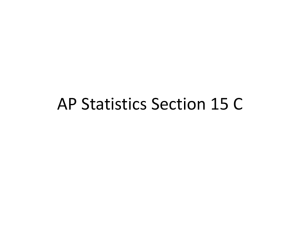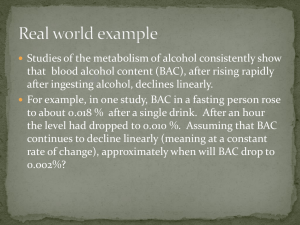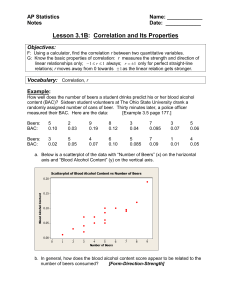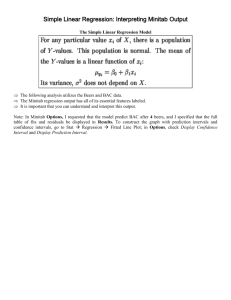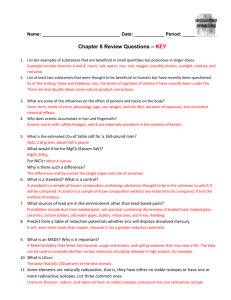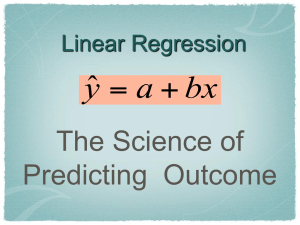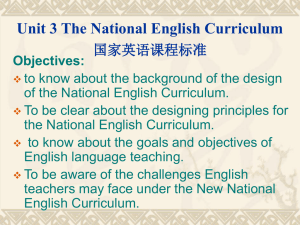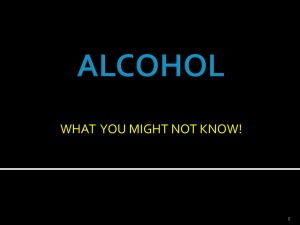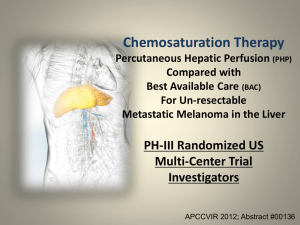AP.Stat.Review.Ch.26-27
advertisement
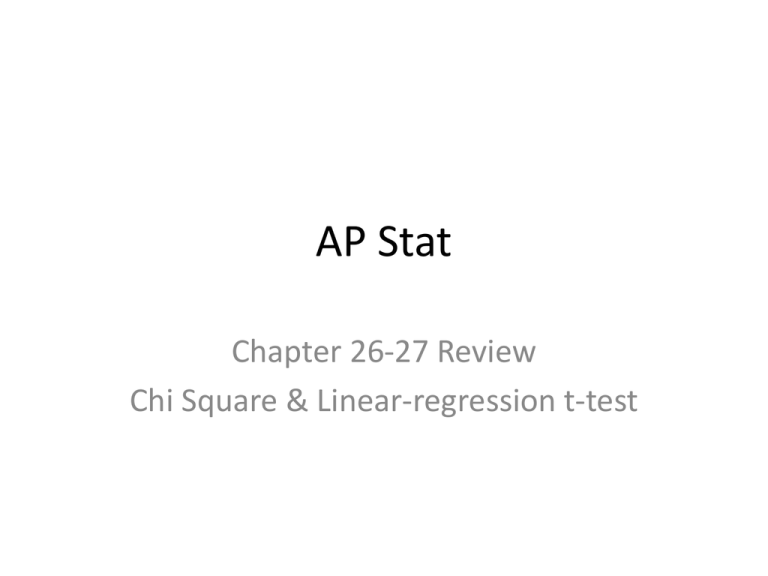
AP Stat Chapter 26-27 Review Chi Square & Linear-regression t-test 1. You wonder if a bag of M & M’s is made up of 1/6 orange, brown, yellow, green, blue & red. Your friend weights each color in the bag and finds 10 grams of orange, 11 grams of brown, 9 grams of yellow, 7 grams of green, 13 grams of blue & 10 grams of red. What could you conclude from running a Chi Squared test of the expected colors of M & M’s? Answer: Can’t do a Chi Squared because M & M’s were not counted. 2. How many df are there for a chi-square test of homogeneity based on a table that has 5 rows & 6 columns? Answer: df = 20 3. Find the number of times you expect each face of a dice to come up if you roll it 90 times. Answer: 15 20-29 30-39 40-49 50-59 60 & over 10 12 17 20 21 Did not succeed in 20 lowering blood pressure 18 13 10 9 Succeeded in lowering blood pressure A new blood pressure medication is tested on 30 volunteers from 5 different age groups. The Results are shown on the table above. 4. If a Chi-square test were done, what kind of test would be conducted? Answer: Chi-square test of homogeneity 5. Find the expected number of successful cases of 40-49 year olds. Answer: (30/150) x 70 = 14 6. Suppose we are testing an SAT prep program. At the end we want to see if the amount of points gained depends on the number of hours a student spent preparing for the SAT. What kind of test would we do? Answer: Linear Regression t-test Flavor Frequency Grape 530 Lemon Lime 470 420 Orange Strawberry 610 585 Trix cereal comes in five fruit flavors, and each flavor has a different shape. A curious Student methodically sorted an entire box of the cereal & found the distribution of flavors For the pieces of cereal in the box as shown above: Is there evidence that the flavors are evenly distributed? P: The distribution of the different flavors in a box of Trix H: Ho: The flavors are evenly distributed Ha: The flavors in the box are not evenly distributed. A: Expected Counts: 2615/5 = 523 for each flavor ECF’s >5, data is counted data, sample is representative of a typical box of Trix N: Chi-square GOF test T: ECF’s shown above, df = 4 O: (530 523) 2 (585 523) 2 ... 47.5717 523 523 2 M: Reject Ho at the .05 level S: There is strong evidence that the distribution of Trix is not the same by flavor. Orange & strawberry have more than expected & lemon & lime have less than expected. A sample of the non-academic interests of students at a high school is shown below. The observed counts are shown versus the expected counts Observed/Expected 10th Graders 11th Graders 12th Graders No Extracurriculars 8/17.96 15/14.85 25/15.19 Sports Team 15/11.60 10/9.59 6/9.81 Club 12/10.10 9/8.35 6/8.55 Band 8/5.61 4/4.64 3/4.75 Choir 5/3.74 3/3.09 2/3.17 Other 4/2.99 2/2.47 2/2.53 a. Show how this distribution would be changed to meet the ECF condition Observed/Expected 10th Graders 11th Graders 12th Graders No Extracurriculars 8/17.96 15/14.85 25/15.19 Sports 15/11.60 10/9.59 6/9.81 Club 12/10.10 9/8.35 6/8.55 Band/Choir/Other 17/12.34 9/10.20 7/10.45 A hypothesis test is run where the null hypothesis is the distribution of non-academic activities is the same across grade levels against the alternative hypothesis that the distribution of non-academic activities is not the same across grade levels. b. What kind of test is this? Answer: χ2 Homogeneity Test c. The results of the test are shown below. State the conclusion. Answer: The distribution of non-academic activities is not the same across grade levels. It appears that students do less non-academic activities as they progress through high school. 20-29 30-39 40-49 50-59 60 & over 10 12 17 20 22 Did not succeed in 20 lowering blood pressure 18 13 10 8 Succeeded in lowering blood pressure Back to our blood pressure medication example. Test whether the blood pressure medicine Is equally effective in treating all age groups: P: The distribution of effectiveness of blood pressure medication across different age groups H: Ho: Ha: The medicine is equally effective for all age groups The medicine is not equally effective for all age groups 20-29 30-39 40-49 50-59 60 & over 16 16 16 16 16 Did not succeed in 14 lowering blood pressure 14 14 14 14 Succeeded in lowering blood pressure A: All ECF’s are greater than 5, data is counted, sample is representative N: Chi-square test for homogeneity T: ECF’s shown above, df = 4 O: (10 16) 2 (22 16) 2 ... 14.0633 16 16 2 M: Reject Ho at the .05 level S: There is strong evidence that the medicine is more effective for different age groups. It appears that the medicine is more effective in treating older patients. A group of students volunteered for a students where they drank a randomly assigned number of cans of beer. 30 minutes later, a police officer measured their blood alcohol content (BAC). A linear regression is run & the output is shown below: 1. Write the equation of the LSRL 2. Test the hypothesis for a linear association between beers consumed & BAC 3. Perform a 95% CI to predict the rate of change between beers consumed & BAC. 1. Predicted BAC = -.0127006 + .0179638(beers consumed) 2. P: β = linear association between beers consumed & BAC H: Ho: β = 0 A: The scatterplot is straight. The residual plot is random. The residuals are normally distributed. Each student’s BAC is independent. N: Lin Reg t-test T: n = 16, df = 14, b1 = .0179628, SE = .002402 O: t Ha: β ≠ 0 .0179638 0 Draw distribution with t = -7.48 & 7.48, P < .0001 .002402 M: Reject Ho at the .05 level S: There is strong evidence of a linear association between beers consumed & BAC 3. N: Lin Reg CI I: CI = .0179638 +- 2.145(.002402) CI = .0179638 +- .0052 (.0128, .0232) We are 95% confident that as BAC will increase between .01238 & .0232 for each additional beer consumed.
